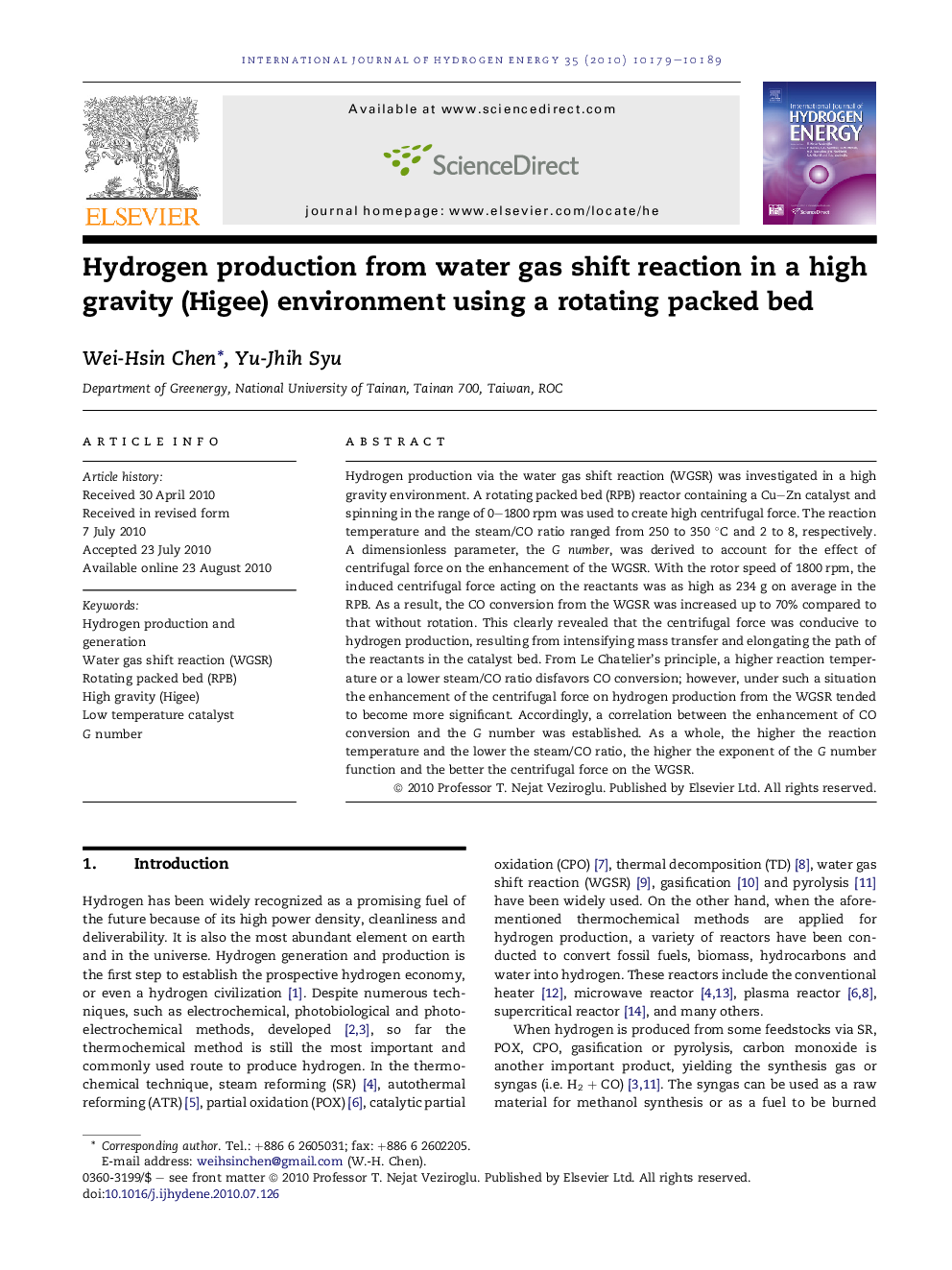| Article ID | Journal | Published Year | Pages | File Type |
|---|---|---|---|---|
| 1280072 | International Journal of Hydrogen Energy | 2010 | 11 Pages |
Hydrogen production via the water gas shift reaction (WGSR) was investigated in a high gravity environment. A rotating packed bed (RPB) reactor containing a Cu–Zn catalyst and spinning in the range of 0–1800 rpm was used to create high centrifugal force. The reaction temperature and the steam/CO ratio ranged from 250 to 350 °C and 2 to 8, respectively. A dimensionless parameter, the G number, was derived to account for the effect of centrifugal force on the enhancement of the WGSR. With the rotor speed of 1800 rpm, the induced centrifugal force acting on the reactants was as high as 234 g on average in the RPB. As a result, the CO conversion from the WGSR was increased up to 70% compared to that without rotation. This clearly revealed that the centrifugal force was conducive to hydrogen production, resulting from intensifying mass transfer and elongating the path of the reactants in the catalyst bed. From Le Chatelier’s principle, a higher reaction temperature or a lower steam/CO ratio disfavors CO conversion; however, under such a situation the enhancement of the centrifugal force on hydrogen production from the WGSR tended to become more significant. Accordingly, a correlation between the enhancement of CO conversion and the G number was established. As a whole, the higher the reaction temperature and the lower the steam/CO ratio, the higher the exponent of the G number function and the better the centrifugal force on the WGSR.
